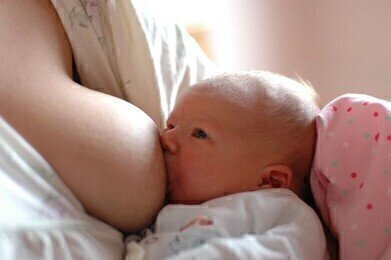GC-MS
Cleaning up the Environment Does Work — Toxic Breast Milk in California
Mar 14 2016
Environmental horror stories frequently find their way into the news — oils spills washing up on pristine beaches and bees being decimated by the use of neonicotinoid pesticides — highlighting the ways that man can negatively impact the planet.
But nature can be forgiving — and with a little help the damage to our environment can be mitigated, or even reversed with plants, animals and insects eventually repopulating the damaged areas. Similarly, man can benefit from these environmental reversals — and a recent journal article demonstrates what can happen when we attempt to undo the damage we have caused.
PBDEs all around us
PBDEs, or polybrominated diphenyl ethers, are primarily known as flame retardants. They are used in many products where the ability to help reduce any fire risk is necessary. So they are found in building materials, furnishings, textiles and most types of transport. They are tough molecules that are resistant to degradation, which is necessary to provide long-lasting protection. But this long-lasting ability is also an Achilles’ heel.
Because of their ubiquitous nature — it was inevitable that they would be found in human blood and tissue samples. PBDEs are inhaled in our homes and workplaces and find their way into the food chain, and so we consume them when we eat. But not only do we eat and breathe them — they bioaccumulate in blood and tissue.
Is banning the answer?
Health concerns around polybrominated diphenyl ethers are based mainly on animal studies as the data on humans is scarce. The likely health concerns include thyroid problems, cancer and neurological development problems. Alongside their ability to bioaccumulate — with high levels found in breast milk — the health concerns led to various bans and regulations around PBDE use being put in place.
There are different classes of PBDEs — depending on the number of bromines in the molecule — and not all are covered under the different regulations. The European Union has banned some PBDEs in electric and electronic devices and in 2009 several classes of PBDEs were listed as Persistent Organic Pollutants (POPs) under the Stockholm Convention — a global treaty with the aim of protecting humans and the environment from POPs.
Clean-up does work
Certain PBDEs were banned in 2006 in California in the USA — in part due to the very high levels that were discovered in breast milk samples. Now a study, published in Chemosphere, has reported that PBDE levels (in samples collected 2009 -2012) are decreasing in breast milk when compared with samples taken (2003-2005) before the ban on came in force. The team used GC-MS to analyse for PBDEs in breast milk — a technique well suited to PBDE analysis as discussed in the article, The Need for Speed Applying Triple Quadrupole MS in Pesticide Residue Analysis Fast Pesticide Residue Analysis in a complex matrix using Triple Quadrupole Mass Spectrometer.
We should never give up on the environment — resilience to the damage we cause is a key attribute.
Image from Wikimedia commons
Digital Edition
Chromatography Today - Buyers' Guide 2022
October 2023
In This Edition Modern & Practical Applications - Accelerating ADC Development with Mass Spectrometry - Implementing High-Resolution Ion Mobility into Peptide Mapping Workflows Chromatogr...
View all digital editions
Events
ACS National Meeting - Fall 2024
Aug 18 2024 Denver, CO, USA
Sep 04 2024 Chiba, Tokyo, Japan
Sep 04 2024 University of Warwick, Coventry, UK
Sep 10 2024 Rockville, MD, USA
Plastics Recycling World Expo Europe
Sep 11 2024 Brussels, Belgium














